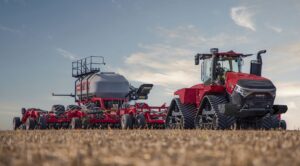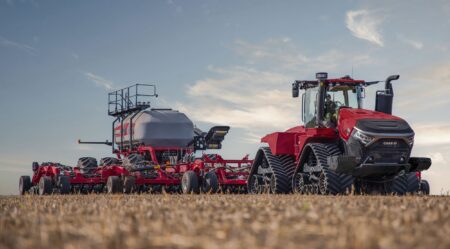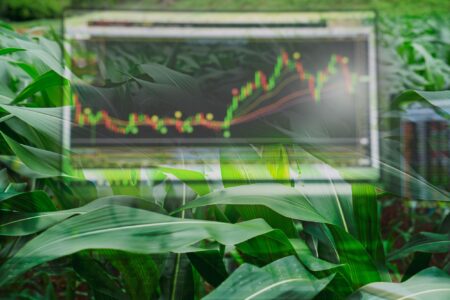USDA published the latest Crop Progress report on Monday, June 23. Here’s a closer look at recent weather and the status of Illinois’ more important crops as June comes to a close.
Weather
Syngenta agronomist Phil Krieg said last week started off cool with rain and thunderstorms. Across his territory, rainfall totals varied widely — a few tenths to more than 3 inches.
“We got anywhere from 0.25 inches south of Springfield to 1.75 inches around Canton to Metamora,” Wyffels Hybrids agronomist Ryan Gentle said of his western Illinois territory. “It was perfect timing before the extreme heat we finished the week with.”
“June 19, the skies cleared and temperatures started to climb,” Krieg said. “By week’s end we were approaching 100°F with a strong south wind.” The wind and heat helped to dry out fields enough to resume planting, replanting, and wheat harvest.
USDA said farmers had 4.9 days suitable for fieldwork the week that ended June 22.
Corn
Acreage Estimates
In March, USDA’s Prospective Planting report said 11.1 million acres of corn would be planted in the state this year. The 2025 FBN Acreage Report published this week noted a “slight decrease (2.5-5%)” in corn acreage for the state of Illinois since March.
“Wet weather and difficult planting conditions helped drive the reduction in corn acres,” the FBN report said. After an exceptionally wet spring Krieg explained, “Southern Illinois is in recovery mode. Getting our crops back on track will take some time and a lot of work.” He added, “Optimism is still running thin.”
USDA is scheduled to release its annual planted Acreage report on June 30.
Emergence Progress
In the latest Crop Progress report, USDA said 95% of Illinois corn had emerged by the week that ended June 22. That’s 2 percentage points behind the five-year average. Last year at this time, 96% of corn in the state had emerged.
Krieg noted some farmers in southern Illinois are still trying to plant or replant, especially if they have nitrogen or herbicides already applied. The crop ranges from just planted to V8 across the region, he said.
Silking Progress
Gentle noted he received his first report of tassels in a late March planted field near Springfield. “With the warm temperatures and recent rains, there should be lots of tassels by the Fourth of July,” he said.
USDA reported 1% of the state’s corn crop has reached the silk growth stage. That’s on pace with last year at this time and slightly ahead of the five-year average.
Corn Condition
On the western side of the state, Gentle said, “Corn conditions are very good in most areas.”
USDA rated Illinois corn 3% very poor, 5% poor, 18% fair, 57% good, and 17% excellent for the week that ended June 22.
This is similar to the national averages for the week, which were reported as 2% very poor, 4% poor, 24% fair, 56% good, and 14% excellent.
Crop Management Activity
Crop Protection Network
Fungicide applications will be right around the corner, said Gentle.
According to the Crop Protection Network, Illinois’ first case of tar spot was confirmed in McDonough County on June 13.
Soybeans
Acreage Estimates
In March, USDA’s Prospective Planting report said Illinois farmers intended to plant 10.5 million acres of soybeans in 2025.
The 2025 FBN Acreage Report published this week noted a “slight increase (2.5–5%)” in soybean acreage for the state of Illinois since March. Although the survey did not collect what these acres were originally intended for, the southern Illinois region reporting more soybean acres overlaps with corn acreage decreases noted in the survey.
USDA will include soybean acres in the Planted Acreage report scheduled for June 30.
Planting Progress
USDA said 95% of Illinois soybeans have been planted. That is 2 percentage points behind the five-year average. Last year at this time 96% of Illinois soybeans had been planted.
In southern Illinois Krieg says soybean planting is “in full speed right now.” He added that many acres that were planted the first four days of June have to be replanted.
Emergence Progress
USDA reported 90% of soybeans in the state have emerged. This is 3 percentage points behind the five-year average. Last year at this time 89% of soybeans had emerged.
Across his territory, Krieg noted earlier planted soybeans have put out their second or third trifoliate. There are a few with a fourth, he noted.
Blooming Progress
Natalina Sents Bausch
USDA said blooming has officially begun in the state. The latest Crop Progress report said 2% of the state’s crop has reached the bloom growth stage. This is equal to the five-year average. Last year at this time 3% of Illinois soybeans had reached the reproductive stage.
Gentle noted, “Mid-April planted 3.7 beans were flowering June 11 in west-central Illinois.”
Soybean Condition
Illinois soybeans were rated 4% very poor, 7% poor, 28% fair, 46% good, and 15% excellent the week ended June 22.
The national average for the same time period was 2% very poor, 5% poor, 27% fair, 56% good, and 10% excellent.
Winter Wheat
Headed
USDA said 100% of Illinois winter wheat has reached the heading growth stage. This is on pace with the five-year average and last year at this time.
Harvest
Krieg reported winter wheat harvest is “full steam ahead” in southern Illinois. “Fortunately, yields are better than expected, although behind last year by 10-15%.” However, local elevators are reporting good quality, he said.
Statewide, USDA said winter wheat harvest is 17% complete. That’s dramatically behind the five-year average of 40%. Last year at this time, 69% of the state’s winter wheat crop had been cut.
Winter Wheat Condition
USDA rated winter wheat condition in Illinois 10% very poor, 6% poor, 23% fair, 48% good, and 13% excellent.
The national average for the same time period is 6% very poor, 13% poor, 32% fair, 43% good, and 6% excellent.
Pasture and Range
USDA rated pasture and range conditions in the state 1% very poor, 9% poor, 26% fair, 40% good, and 24% excellent.



:max_bytes(150000):strip_icc()/MasseyFerguson5Mseriestractor-dc8f9f4fe5284a849545935c216587af.jpg)



:max_bytes(150000):strip_icc()/Corn-4-Rows-Natalina-Sents-Bausch-June-17-6fc7320ebae64c6a96dd631a57fcdb0c.jpg)


:max_bytes(150000):strip_icc()/IMG_7578-4575d20fbadb4cbd8188b00e6dd4081b.jpeg)

